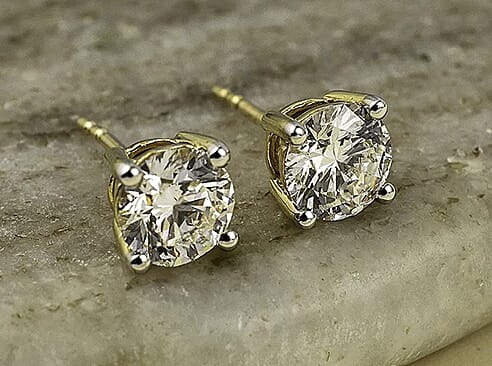In the realm of diamonds, whether natural or man-made, certification is a critical factor in determining quality, value, and authenticity. The Gemological Foundation of America (GIA) and the International Gemological Establishment (IGI) are two of the most perceived gemological laboratories giving such certifications. The two organizations have established reputations for evaluating diamonds, however they approach the cycle differently. This article will compare GIA vs IGI with an emphasis on their certification of man-made diamonds.
Outline of GIA and IGI
GIA: A Leading Authority
The Gemological Establishment of America (GIA) is a globally famous gemological organization founded in 1931. It is celebrated for its exhaustive grading framework and its obligation to maintaining the best expectations of quality in diamond assessment. GIA is a trailblazer in the diamond grading industry and has been instrumental in establishing the 4Cs of diamond quality: Cut, Variety, Clarity, and Carat Weight.
IGI: A Global Presence
The International Gemological Foundation (IGI) was established in 1975 and operates an organization of laboratories around the world. IGI is known for its broad range of gemological administrations, including the certification of diamonds, hued stones, and fine adornments. The organization aims to provide accurate and reliable grading to assist consumers with making informed purchasing decisions.
Certification of Man-Made Diamonds
GIA’s Approach to Man-Made Diamonds
GIA has been grading man-made diamonds beginning around 2007 and has developed explicit criteria for assessing these stones. GIA utilizes the same grading scale for man-made diamonds as it accomplishes for natural diamonds, and that means the 4Cs apply equally to both. One notable aspect of GIA’s approach is its careful and thorough grading process. Each man-made diamond is evaluated utilizing advanced innovation, ensuring an elevated degree of precision and accuracy.
GIA’s reports for man-made diamonds are clearly distinguished from those for natural diamonds. They include a detailed description of the diamond’s characteristics and expressly state that the diamond is man-made. This transparency forestalls any confusion among natural and engineered diamonds.
IGI’s Approach to Man-Made Diamonds
IGI also provides certification for man-made diamonds, and like GIA, it applies the same 4Cs grading framework to both natural and engineered stones. IGI’s reports offer a detailed breakdown of a diamond’s cut, variety, clarity, and carat weight, along with any other relevant characteristics.
IGI is known for its broad global organization and its ability to deliver certification administrations with an emphasis on accuracy and reliability. The establishment provides a clear distinction in its reports to indicate whether a diamond is natural or man-made, ensuring that consumers are very much informed about their purchases.
Key Contrasts Among GIA and IGI
Grading Standards and Techniques
While both GIA and IGI keep similar grading guidelines, there can be contrasts in their strategies. GIA is known for its stringent grading criteria and is often viewed as a benchmark in the business. IGI, with its broad international presence, may offer marginally different grading points of view based on its broad organization and regional expertise.
Transparency and Revealing
Both GIA and IGI emphasize transparency in their reports. GIA’s reports are exceptionally detailed and are often considered the best quality level in the business. IGI reports are also complete however may vary somewhat in format and presentation. The two organizations clearly label man-made diamonds to guarantee there is no ambiguity about the stone’s origin.
Market Insight
GIA is as often as possible saw as the most prestigious gemological establishment, largely because of its long history and thorough standards. IGI, while also regarded, is often viewed as a more accessible and globally integrated choice. The decision among GIA and IGI may depend on personal inclination and the particular necessities of the purchaser or merchant.
Conclusion
With regards to man made diamonds, both GIA and IGI offer reliable and accurate certification. GIA is eminent for its stringent standards and historical impact in the gemological field, while IGI provides exhaustive administrations with a global reach. Understanding the distinctions between these two organizations can assist consumers with making informed decisions and guarantee they get an excellent man-made diamond that lives up to their assumptions.

